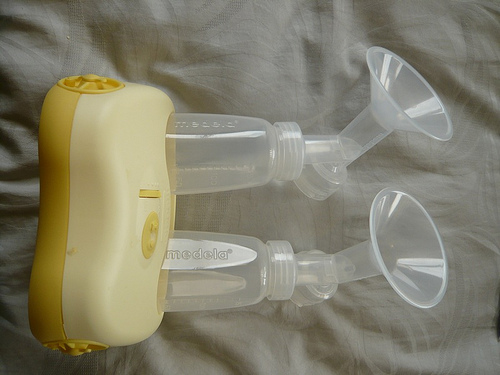Electric Breast Pumps vs. Manual Breast Pumps – Which is Best?
New moms have many choices in types and styles of breast pumps. With so many varieties available today, choosing the right breast pump can be confusing and difficult. The biggest decision in choosing the right breast pump is choosing whether to use a manual breast pump such as an Avent Isis breast pump or an electric one such as an Ameda or Mandela breast pump.

- How to Keep Breastfeeding When You Go Back to Work
If you're headed back to work and wondering if you should continue to breastfeed the answer is yes. Most work schedules can be combined with breastfeeding. You may just have to get a little creative! There are...
Manual Breast Pumps
If you plan to breastfeed often and use a pump only on occasion, a manual pump may be the best choice. Manual pumps are smaller and lighter than electric breast pumps and so you can easily slip one in your purse or diaper bag to carry with you. The Avent Isis breast pump is a popular manual pump, some of which even offer an electronic memory to pump at the manual pace you set.
Another advantage to manual breast pumps is their affordable cost. They tend to cost less than electric breast pumps, so if you are looking for a breast pump for only occasional use, manual pumps provide the most economical option. If you are unsure how often you will pump, consider getting a manual breast pump first and then investing in an electric one if you find you are pumping often. Finally, manual pumps give mothers control over the suction and speed of the pump, offering more flexibility during the process than an electric pump.
On the down side, manual pumps require arm and hand strength, and if you pump often with a manual pump, you may find yourself growing tired or unable to pump enough milk for a feeding.
Electric Breast Pumps
Electric breast pumps are designed for women who pump often, especially multiple times per day. If you are away from your baby for long stretches of time—at work during the day, for instance—an electric pump will be the best option. Electric breast pumps pump more milk in a shorter amount of time, and when used regularly can also increase the total amount of milk mothers produce. Some electric models also offer a double pumping feature, further reducing the time it takes to pump in a sitting.
The drawbacks to electric pumps is that they are often heavy, noisy, and more costly than manual pumps. However, manufacturers are making them lighter and more affordable as time goes on, so these disadvantages are becoming less prohibitive.




